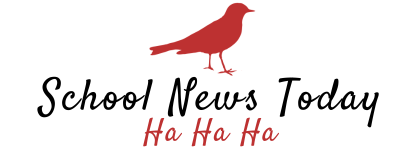Museum Management: How To Ruin a Museum in 4 Steps
- Hire a Director who is more invested in building their resume than taking care of your museum.
- Use the tactics of a corporate raider to liquidate assets.
- Adopt a competitive strategy with other local attractions instead of cooperating.
- Keep doing things the same old way.
Example: The Museum of Insider Art
The Museum of Insider Art at Richard E Rich Academy has deployed all four of these strategies and managed to destroy a beloved and well-endowed museum, as well as stirring up a lot of local resentment against the Academy.
Here’s how The Museum of Insider Art managed to achieve this in just a year and a half.
Hire A Careerist Director
This one was easy. The Chair of the Board of Trustees pushed through an old college friend for the job of new Director. Yes, we also spent $15,000 on a professional search company and ignored their recommendation. But Bugsy (not his legal name) was a shoo-in from the start. In Bugsy’s case, it was a tasseled moccasin shoe, gently aged by summers on Nantucket enjoying G&Ts with other trustees on a private beach.
Bugsy makes a career of heading up one little museum after another, and he has an eye for the underperforming museum with some hidden assets. Otherwise, Bugsy has no interest in art, museums, or culture of any kind, which makes it painless for him to execute the next step in ruining a museum.
Corporate Raid
What Bugsy loved about our museum was that it had almost no income or visitors. Still, it did have a nice endowment and a collection of black and white photos from noted alum and superstar photographer Deiter Reichstag. These pictures were donated to the school by the artist when he was just starting out and are now worth a fortune.
Deiter Reichstag still lives in the area and is now so famous that he has a fan base of tourists coming to see his studio, eat at his vanity restaurant and view his private sculpture collection. Included on the regional Heritage Trail and popular on Instagram, this art hot spot is a driver of the local economy.
The situation was ideal for Bugsy. Our donated photos were negligently stored in the decaying Richard E Rich Library and rarely on display. Reichstag has cut ties with Richard E Rich Academy and sends his children to the alternative Steiner school, Burning Badger Waldorf, where he has displayed his work. With our hidden gold, we were ripe for an asset raid.
During the nominal interview process, Bugsy never asked about the photos. But the Chair had made the mistake (or calculated move) of giving Bugsy a private viewing. Grrrrr.
As soon as he started the job, Bugsy had a friend come in and do an off-the-books appraisal of the photo trove and began feeling out a foreign buyer he had in mind. Yes, of course, he found a way to pick up an illegal commission on both sides and expense extravagant food and travel in the process. And, of course, he had built terms into his contract that guaranteed a bonus based on growing the cash portfolio of the museum.
Having made a tidy sum, Bugsy was now ready to move on to the third step of Ruining A Museum.
Do Not Cooperate With Local Attractions
As soon as Bugsy had the sale set up, he was ready for the media circus he hoped would raise his profile in the museum world and increase his social media following. All clicks are good clicks, he liked to say. He got them!
The artist was chagrined to find that he had failed to stipulate that the museum should hold on to his work when he made his long-ago gift. At the time, he was hoping for a mention in the school newsletter or even a show at the Museum of Insider Art–anything to promote his career.
After the sale, Reichstag posted a series of impassioned videos warning young artists against making the same mistakes he did, garnering more press for Bugsy.
Deiter Reichstag fans were outraged that these heretofore-forgotten pictures would leave the country. The fans who trolled Bugsy raised his profile even higher. Angry content is particularly great for boosting social stats, and Bugsy was thrilled.
Local businesses reliant on the Reichstag trade were outraged that international media coverage made it appear that all Reichstags had left the region. Ticket sales were down at the nearby Museum of Invisible Art because people confused the two venues. Bugsy was accused of jeopardizing the upcoming Reichstag Festival and undermining the local economy.
When I pointed out to Bugsy that we could have dramatically increased visitorship to the Museum of Insider Art by coordinating with other local venues on the Reichstag Circuit and helped boost the region as well, Bugsy schooled me on the final principle of museum destruction.
Keep Doing Things The Same Old Way
At an expensive expensed lunch at his club in the city, Bugsy explained to me that the point of the Museum of Insider Art is not to display art, to promote art, or, God forbid, to bring in visitors. “Visitors are a lot of trouble,” he grunted. “And a liability.”
Over some particularly pungent egg salad, Bugsy reminded me of the Richard E Rich Academy motto, The Goal Of Any Institution Is To Preserve Itself.
Although the Museum of Insider Art has temporarily been shuttered after alumni protest at the mismanagement of the Reichstag archive, it continues to serve its purpose as an empty signifier of school prestige and art world self-dealing.
While wiping his mayonnaise-covered hands on a luxuriously thick cotton napkin, Bugsy scolded me for forgetting the mission of the museum, which is to promote insiders. “It’s right there in the name: Insider Art!” he bellowed loudly enough to annoy some traders drunk on lunch champagne at the next table.
Bugsy argued that the temporary closure of the museum only helped fulfill its mission. We can use the reopening as a strategy for raising more money. Another lengthy search for a new Director would provide delightful lunch and dinner junkets for the Trustees as well as other insider handouts and commissions to keep the internal money flowing. The reopening will generate more press.
Reinventing the museum will also serve as an easy target for the Head of School as he sets easily achievable goals in his employment contract. All the better for him when he applies for his next Headship and climbs the preppy salary tree. No surprise, the Head is one of Bugsy’s old-school chums.
He actually used the word “chum.”
My cheerful suggestions for ways to bring in new visitors, make the museum relevant to the times, and work with our local art community were met with an eye-roll and a mouthful of egg.
When I complained that the closing of the museum meant displacing the local artists who were using our Open Studios and canceling the Free Art Friday classes for area children, both programs I had worked long and hard to establish, Bugsy laughed.
“You will get more credit for starting new programs than keeping the old ones alive. And the museum saves money while it’s closed. More interest in the bank.”
The Museum of Insider Art has been closed many times before, Bugsy explained to me. Failure is part of the business model. “We keep doing things the way we always have because failure succeeds.”
On his way out the door, Bugsy paid for the lunch of the traders sitting next to us, no doubt charging the Museum of Insider Art. “Good contacts for me,” he explained. “One of those traders is a major collector.”
With that, Bugsy was off to a meeting at the new museum he had set his sights on, one with an important collection of Native American artifacts hidden in the basement.
His final words to me were, “Hee hee!”
Bugsy did have the last laugh. Concerned alums played into his hands by having him fired. This enabled him to cash in on the golden parachute in his contract, which meant we would still be paying him for another three years.
Read all about: Why Campus Vanity Buildings Get Built

